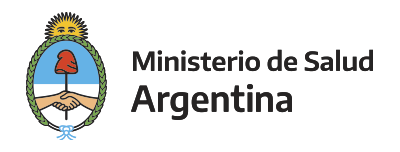Please use this identifier to cite or link to this item:
http://sgc.anlis.gob.ar/handle/123456789/2664| DC Field | Value | Language |
|---|---|---|
| dc.contributor.author | Alvarez Di Fino, Eliana | es |
| dc.contributor.author | Rubio, Jorge | es |
| dc.contributor.author | Abril, Marcelo | es |
| dc.contributor.author | Porcasi, X | es |
| dc.contributor.author | Periago, Maria Victoria | es |
| dc.date.accessioned | 2025-08-08T13:29:50Z | - |
| dc.date.available | 2025-08-08T13:29:50Z | - |
| dc.date.issued | 2020-02-10 | - |
| dc.identifier.uri | http://sgc.anlis.gob.ar/handle/123456789/2664 | - |
| dc.description | Fil: Eliana M Alvarez Di Fino. Mario Gulich Institute for Higher Space Studies, National University of Cordoba, National Commission of Space Activities (UNC_CONAE); Córdoba, Argentina | es |
| dc.description | Fil: Jorge Rubio. Mario Gulich Institute for Higher Space Studies, National University of Cordoba, National Commission of Space Activities (UNC_CONAE); Córdoba, Argentina | es |
| dc.description | Fil: Marcelo Abril. Fundación Mundo Sano; Buenos Aires, Argentina | es |
| dc.description | Fil: Ximena Porcasi. Mario Gulich Institute for Higher Space Studies, National University of Cordoba, National Commission of Space Activities (UNC_CONAE); Córdoba, Argentina | es |
| dc.description | Fil: María V Periago. Fundación Mundo Sano. Consejo Nacional de Investigaciones Científica y Técnicas (CONICET); Buenos Aires, Argentina | es |
| dc.description.abstract | Background Soil-transmitted helminths (STHs) comprise a group of helminth parasites that are included in the list of Neglected Tropical Diseases and require a passage through the soil to become infective. Several studies have detected that infection with STHs are associated with certain socioeconomic, environmental and soil characteristics. In Argentina, the presence of these parasites has been detected through a few point studies conducted in localities from 11 of the 23 provinces that comprise the country. Methods/Principal findings The most important characteristics previously associated with the presence of STHs were identified and ranked through the use of an expert survey and the Analytical Hierarchy Pro- cess (AHP) in order to construct a risk map of STHs specific for Argentina. Prevalence data from previous studies was used to validate the generated risk map. The map shows that half of Argentina, from the Central provinces to the North, contains localities with the characteris- tics necessary for the development of these parasites. Conclusions/Significance The predicted map should serve as a useful tool for guiding the identification of survey areas for the generation of baseline data, detecting hotspots of infection, planning and prioritizing areas for control interventions, and eventually performing post-implementation surveillance activities. | es |
| dc.language.iso | en_US | es |
| dc.relation.ispartof | PLoS neglected tropical diseases | es |
| dc.subject | Helmintiasis | es |
| dc.subject | Argentina | es |
| dc.subject | Factores de Riesgo | es |
| dc.title | Risk map development for soil-transmitted helminth infections in Argentina | es |
| dc.type | Artículo | es |
| dc.identifier.doi | 10.1371/journal.pntd.0008000 | - |
| item.grantfulltext | open | - |
| item.languageiso639-1 | en_US | - |
| item.openairetype | Artículo | - |
| item.openairecristype | http://purl.org/coar/resource_type/c_18cf | - |
| item.cerifentitytype | Publications | - |
| item.fulltext | With Fulltext | - |
| Appears in Collections: | Parasitosis intestinales en Argentina | |
Files in This Item:
| File | Description | Size | Format | |
|---|---|---|---|---|
| 10. PLoS Negl Trop Dis 14(2) 0008000 2020.pdf | English; 17 pages | 2.12 MB | Adobe PDF | View/Open |
Page view(s)
87
checked on Jan 2, 2026
Download(s)
11
checked on Jan 2, 2026
Google ScholarTM
Check
Altmetric
Altmetric
Items in DSpace are protected by copyright, with all rights reserved, unless otherwise indicated.

